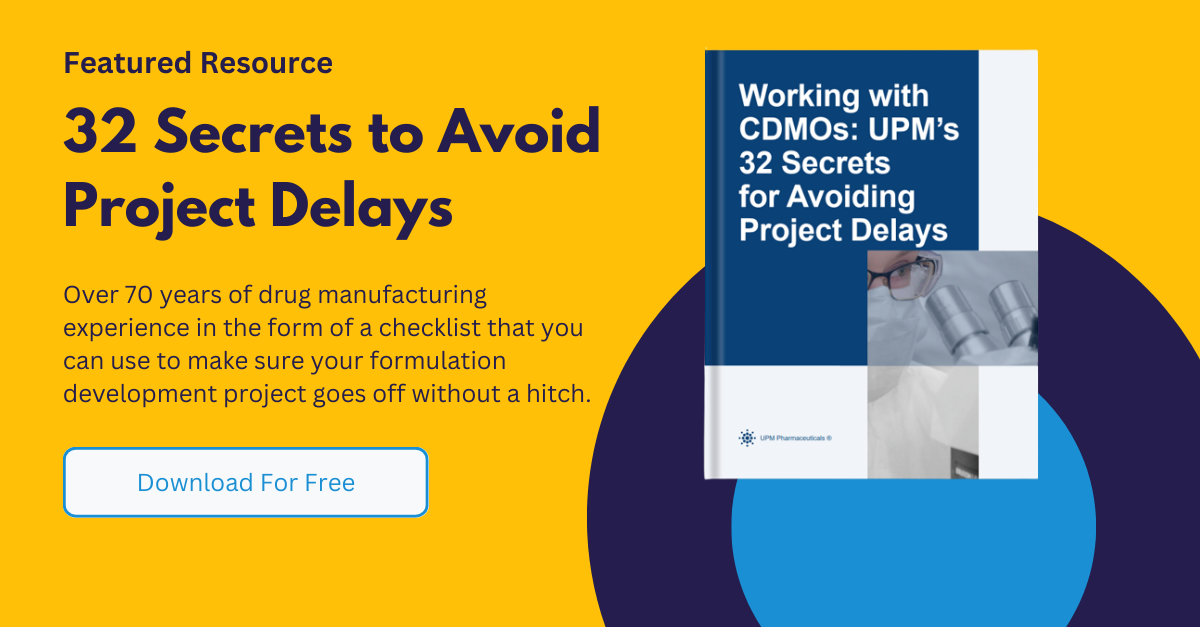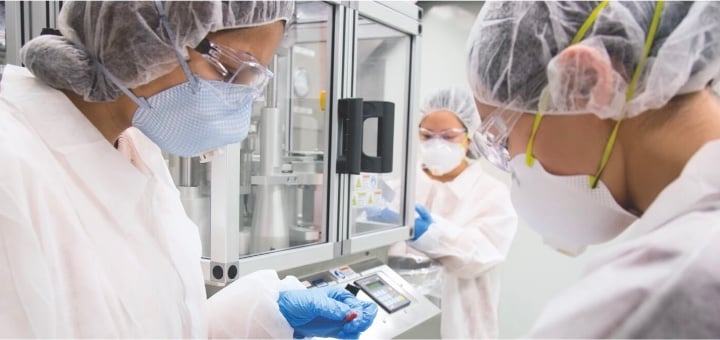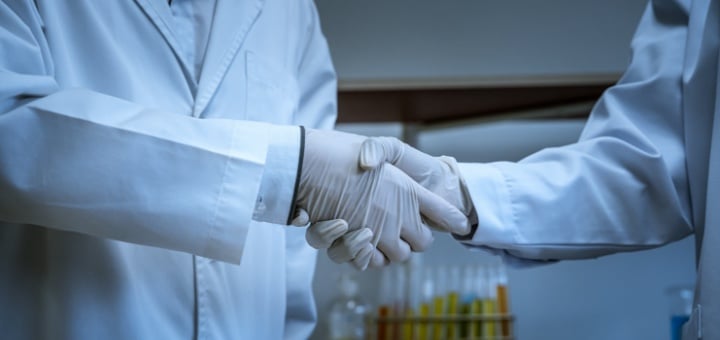High drug potency refers to the inherent strength and effectiveness of a pharmaceutical compound in producing desired therapeutic effects at low concentrations. It signifies the compound's ability to achieve significant biological activity even at small doses, requiring precise formulation and handling to ensure safety and efficacy in pharmaceutical development and manufacturing processes.
The effects of drugs are dependent on their potency and concentration, and high-potency drugs are particularly important in the field of oncology. These drugs are designed to target cancer cells with greater precision and efficacy while minimizing damage to healthy cells.
High drug potency is a term used to describe the strength of a pharmaceutical compound and its ability to produce an effect at low doses. The demand for high-potency drugs has increased in recent years due to advances in clinical research and pharmacology, particularly in oncology. However, this increase presents significant challenges for those involved in handling and manufacturing such compounds.
One of the main challenges associated with high-potency drugs is their cytotoxicity, which can cause cancer, mutations, developmental effects, or reproductive toxicity at low doses. As a result, specialized containment facilities are required to ensure the safe handling of these compounds throughout their production process.
Drug concentrations based on the information are critical in the development and manufacturing of high-potency drugs. Precise measurements and formulations are required to ensure that the drugs are safe and effective and that they meet regulatory requirements.
This article will provide an overview of high-potency drugs, including their characteristics and examples, factors that determine their potency, as well as their effects on patients.
Key Takeaways
- High-Potency Active Pharmaceutical Ingredients (HPAPIs) are in high demand due to advances in clinical pharmacology and oncology research.
- HPAPIs require specialized containment to protect employees and the environment from exposure.
- Upgrading existing facilities to handle HPAPIs is costly, and many contract manufacturers are building new facilities specifically for their manufacture.
- The pharmaceutical industry is developing voluntary standards for HPAPI production and handling to address the challenges of manufacturing these compounds.
Characteristics of High Potency Drugs
When it comes to High-Potency Active Pharmaceutical Ingredients (HPAPIs), there are certain characteristics that must be taken into account.
These include:
- Toxicity
- Pharmacological potency
- Occupational exposure limits.
These factors determine the specialized containment needed for their production and handling.
HPAPIs have a higher pharmacological potency than traditional APIs, meaning they can cause adverse effects such as cancer, mutations, developmental effects, or reproductive toxicity at lower doses. This is due to their selectivity in binding to specific receptors or inhibiting specific enzymes at much smaller effective doses than traditional APIs.
The function of a potent drug increases with dose until the lethal dose is reached. This is why it's important to regulate the production and handling levels of HPAPIs in pharmaceutical facilities using occupational exposure limits. These limits are measured in micrograms per cubic meter (μg/m3), with lower values indicating greater chemical potency and more significant containment requirements.
Producing homogeneous mixtures of HPAPIs can be challenging due to their physical and chemical complexity. These complex drug entities typically require multi-step processes or semi-synthesis involving over ten synthetic steps. Accurate dosing is essential, especially at very low doses where a tiny amount can mean the difference between a therapeutic or toxic event.
It's worth noting that time interval based on information is crucial when handling HPAPIs. The potency and toxicity of these drugs can change over time, so it's important to have up-to-date information on their stability and shelf life. This can help ensure their safe and effective use in pharmaceutical manufacturing.
Examples of High Potency Drugs
Examples of medications that require careful dosing due to their ability to elicit a given response at low concentrations include synthetic opioids, benzodiazepines, antipsychotics, and cytotoxic compounds used in cancer treatment.
These drugs have high potency because they are able to produce maximum responses with lower doses compared to other drugs in their class. This can be attributed to the drug molecule's intrinsic activity, which is the ability of the drug molecule to activate receptors and produce an effect.
Dosing these drugs requires understanding their dose-response curve, which shows the relationship between the dose of the drug and its therapeutic effects. The dose-response curve can be influenced by factors such as partial agonists or inverse agonists that may alter the maximal response or intrinsic activity of a drug molecule.
Careful dosing is necessary to ensure therapeutic benefits while minimizing adverse effects associated with high-potency drugs.
Factors that Determine Drug Potency
The determination of a drug's strength is influenced by a complex interplay of various factors, including the drug dosage, receptor expression and affinity, efficacy, chemical structure, patient characteristics, and interactions with other drugs. The concentration of the active ingredient in the systemic circulation plays a crucial role in determining drug actions. The relationship between dose and response can be depicted through a dose-response curve, which describes the therapeutic window for a particular compound. The potency of a drug refers to its ability to produce an effect at low doses within this therapeutic window.
Dose-effect relationships are determined by measuring the magnitude of response to varying concentrations of drugs. Different routes of administration may lead to differences in potency due to variations in bioavailability or absorption rates.
Patient characteristics such as age, sex, weight, and genetics can also affect potency by altering pharmacokinetics or pharmacodynamics. Interactions with other drugs can further modify potency by affecting absorption rates or metabolism.
Overall, understanding the factors that determine drug potency is critical for optimizing therapeutic outcomes while minimizing adverse effects.
|
Factor |
Description |
Example |
|
Drug Dosage |
Amount administered per unit time or body weight |
5 mg/kg/day |
|
Receptor Expression & Affinity |
Number and binding strength of receptors available for interaction with drug molecule |
High-affinity receptor subtype expressed exclusively in brain tissue |
|
Efficacy |
Maximum biological response achievable with given compound |
90% reduction in blood pressure compared to placebo |
|
Chemical Structure |
Molecular properties influencing solubility, stability, permeability across membranes, etc. |
Lipophilicity increasing CNS penetration |
|
Patient Characteristics |
Age, sex, genetics, weight, metabolic rate, etc. |
Impaired renal function leading to decreased clearance |
Effects of High Potency Drugs
The effects of medications with a high concentration of active ingredients can elicit strong physiological responses, potentially leading to significant therapeutic benefits or adverse reactions.
A single drug can have different effects on the body depending on its concentration and dose-response curve. For instance, opioids bind to specific receptors in the brain and spinal cord, producing analgesia (pain relief), sedation, respiratory depression, euphoria, and addiction at higher concentrations. In contrast, lower doses may produce beneficial effects without significant side effects.
Therefore, understanding the dose-effect relationships is crucial for optimizing drug therapy and minimizing harm.
Loading dose is another important consideration when administering high-potency drugs. This refers to an initial higher-than-usual dose given to achieve a therapeutic effect quickly while waiting for the maintenance dosage to take effect. Loading doses are often used in critical care settings or during emergency situations where time is of the essence. However, loading doses also increase the risk of toxicity and adverse events if not carefully monitored.
Thus, healthcare professionals need to balance the potential benefits and risks of high-potency drugs by individualizing treatment plans based on patient characteristics and evidence-based guidelines.
Download Now: 32 Secrets to Avoid Project Delays [Free eBook]
CONTACT US
Partner with a Qualified CDMO: UPM Pharmaceuticals
Bringing a new drug to market is a lengthy, costly, and risky journey, compounded with the time pressure of being first in the marketplace. UPM is unlike other CDMOs because we are a large pharma supplier and an independent, family-owned CDMO, allowing us greater flexibility in our partnerships. To this point, our ended-to-end CDMO services have helped bring over 80 pharma products to market.
Our state-of-the-art seven-acre pharmaceutical campus features our commercial manufacturing and packaging site, commercial warehouse, and DEA-Approved vault. With extensive pharmaceutical industry experience and a solid track record of bringing drug products to market, our capabilities are the best that commercial pharma has to offer. Contact UPM to learn more about our contract development and manufacturing organization and how we can optimize your pharmaceutical project results.
Connect with Our CDMO Services

